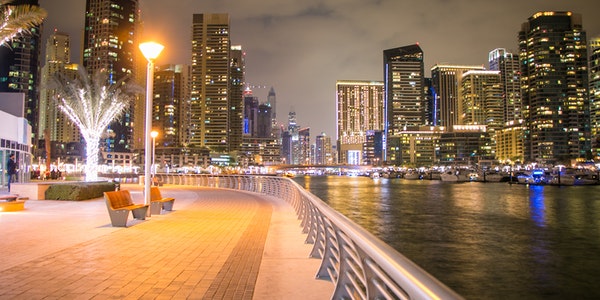Metal Halide Lamp
Metal halide lamp is a kind of discharge lamp which works on AC power supply and produces arc discharge light in the mixed vapor of mercury and rare metal halides. Metal halide lamp is the third generation light source made by adding various metal halides on the basis of high pressure mercury lamp. Sodium scandium type metal halide lamp is used for lighting. The metal halide lamp has the characteristics of high luminous efficiency, good color rendering performance and long service life. It is a new energy-saving light source close to sunlight color, and is widely used in indoor lighting of stadiums, exhibition centers, large shopping malls, industrial plants, streets, squares, stations, docks and other places.
Performance Structure
Straight tube metal halide lamp
There are two kinds of metal halide lamp, one is quartz metal halide lamp, its arc tube bulb is made of quartz, the other is ceramic metal halide lamp, its arc tube bulb is made of translucent alumina ceramic, metal halide lamp is one of the best electric light sources in the world, it has high luminous efficiency (65 ~ 140lm / W), long life (5000 ~ 20000h), good color rendering (ra65 ~ 95) structure It is compact and stable. It has the advantages of fluorescent lamp, high pressure mercury lamp and high pressure sodium lamp, and overcomes the defects of these lamps. Metal halide lamp has the main advantages of gas discharge light source.
In particular, the advantages of high luminous efficiency, long service life and good light color make the metal halide lamp develop rapidly and more widely. The metal halide lamp on the market, like other gas discharge lamps, has mercury in the filling material. Mercury is a toxic substance. When Mercury is injected into the lamp, careless treatment will cause pollution to the production environment and damage the health of workers. When the arc tube exhausts, a trace of mercury vapor is discharged. If it is not handled properly, it will be directly discharged into the atmosphere. When the lamp is damaged, it will cause pollution to the environment.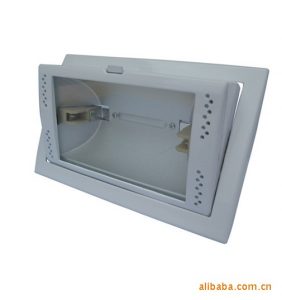
The gas discharge lamp, which emits light from the mixture of metal vapor and the decomposition product of halide, has a spectral line with the added metal characteristic, so the light color is improved and the light efficiency is improved. The correlated color temperature of this kind of lamp is about 4000K, the color rendering index is 70, and the luminous efficiency is above 70lm/w.
The product parameters of metal halide lamp adopt the international leading arc tube unique olive shape design, which can bring excellent light color consistency. It can effectively solve the uneven color distribution caused by light color drift. The bracket mounting structure without solder joint can prevent bracket solder joint fracture caused by high temperature oxidation or oscillation, and further improve the reliability of the bulb. The arc tube is not limited by the position of the ignition point, and can realize the ignition point at any position. The luminous efficiency is 20% higher than that of ordinary metal halide lamp.
The average light efficiency of hpl400 / Ed / up / 4K was 110lm / W. If it is used in a reasonable lighting circuit, the electrode of the lamp can be better protected, and the service life of the lamp can be longer. Up to 20000 hours. High luminous efficiency and long life can reduce the number of light sources, electrical appliances and lamps used in the project, and reduce the number of bulb replacement,
So as to reduce the overall maintenance cost. It is suitable for vertical and horizontal ignition points, and the effect of vertical ignition point is better. It is most suitable for factories, large-scale stores, shopping centers, buildings, advertisements, airports and other places that require high consistency of light and color.
Classification Method
Sodium scandium metal halide lamp
The metal halide is charged into the arc tube, and the metal atom is ionized to excite the light source. It has the characteristics of high luminous efficiency, high color temperature and good color rendering. In 1911, Steinmetz discovered that when various metal iodides were added to mercury discharge lamps, the spectrum of these metals would be produced in the discharge arc.
However, the temperature of the discharge tube at that time was limited by the softening point of the glass, and its spectral intensity was weak. In 1953, a microwave excited quartz light-emitting lamp with thorium iodide and no electrode was made. It produces bright white thorium emission lines. At the end of 1950’s, in order to improve the light color of high-pressure mercury lamp, the experiment of filling various metals and metal halides into mercury arc tube was carried out. In 1961, the first metal halide lamp came out. The luminescent substance in the lamp is no longer mercury, but metal halide (iodide of sodium, thallium and indium), Metal halide lamp has been further studied and developed.
There are many classification methods for metal halide lamps, which can be divided into four categories according to the fillers: ① sodium, thallium and indium. There are three peaks in yellow, green and blue regions. ② Scandium and sodium. It has approximately continuous spectrum in the whole visible range. ③ Dysprosium and holmium. In the whole visible spectrum range, there are many spectral lines with very narrow spacing, which is close to continuous spectrum. ④ Tin halides. It has continuous molecular spectrum. There are also lamps filled with single metal halide, which can emit spectrum of specific wavelength, such as thallium lamp with 535nm wavelength spectrum, green.
According to the structure of the lamp, it can be divided into three categories:
① The quartz arc tube is equipped with two main electrodes and a starting electrode, and a hard glass shell (straight tube and ellipsoid) halogen tungsten lamp. This kind of lamp is mainly used for general lighting of stadium, road, factory building, etc.
② The straight tubular arc tube is equipped with a pair of electrodes without outer glass shell, which can replace the straight tubular tungsten halogen lamp for floodlighting in stadium and other areas.
③ Short arc spherical halogen lamp without outer glass shell, single end or double end ellipsoidal halogen lamp. It is mainly used for film projection, film and television shooting and lighting.
The results show that the luminous efficiency of tungsten halide lamp with hard glass outer shell (or quartz outer shell) is about 75-120lm / W, and the service life is from thousands of hours to 20000 hours; the luminous efficiency of straight tube arc tube tungsten halide lamp is about 90lm / W, and the service life is 1000-2000 hours; the luminous efficiency of short arc spherical tungsten halide lamp is 90-120lm / W, and the service life is hundreds of hours. The maximum power of metal halide is 10kW, and the minimum can be as low as 25W for home lighting.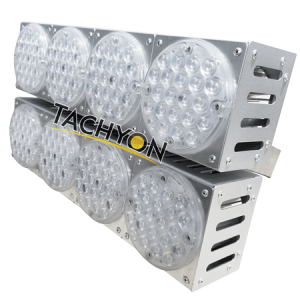
Working Principle
Spherical metal halide lamp
The arc tube is filled with mercury, inert gas and more than one metal halide. When working, mercury evaporates, and the mercury vapor pressure in the arc tube reaches several atmospheres (0.5 MPa); halide also evaporates from the tube wall, diffuses into the high temperature arc column, decomposes, and metal atoms are ionized and excited, radiating characteristic spectral lines. When the metal ions diffuse back to the tube wall, they meet with halogen atoms in the colder region near the tube wall and recombine to form halide molecules. This cycle continuously supplies metal vapor to the arc.
The partial pressure of metal vapor at the arc axis is close to that of halide vapor at the tube wall, which is generally between 1330 PA and 13300 PA. The average excitation potential of metal is about 4ev, while that of mercury is 7.8ev. The total radiation power of metal spectrum can greatly exceed that of mercury. As a result, the output spectrum of typical metal halide lamp is mainly metal spectrum. Filling different metal halides can improve the color rendering performance of the lamp (the average color rendering index RA is 70-95). Only 23% of the total radiation of mercury arc is in the visible region, while more than 50% of the total radiation of metal halide arc is in the visible region. The luminous efficiency of the lamp can reach more than 120lm / W.
The chemical reactions between metal halides and electrodes, quartz glass and halides can be induced at high temperature. The metal halide is easy to deliquescence, and the inhalation of a small amount of water can cause abnormal discharge and make the lamp black. Dysprosium oxide, yttrium oxide and scandium oxide are used as electron emission materials to prevent the reaction between emission materials and halogen. Some metals (such as sodium) in the arc tube will migrate, resulting in excessive halogen, resulting in extremely strong negative charge of halogen, resulting in arc contraction and increase of starting voltage and working voltage.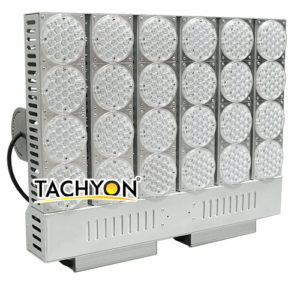
The metal halide lamp cannot be started reliably because it is close to the trigger electrode. Generally, a bimetallic starter is used, or a leakage transformer with a sufficiently high starting voltage is used, or an electronic trigger is used. A current limiter (ballast) is needed to ignite the metal halide lamp, and its working current is larger than that of the high pressure mercury lamp with the same power.
Selection Types
Bubble metal halide lamp
In the field of industrial lighting, it is still the main line to choose energy-saving and environmental protection lighting scheme to replace the traditional high energy consumption light source. Energy saving lamp is not the only light source for lighting energy saving. Whether the light source is energy-saving or not should be measured from three aspects: light efficiency, luminous flux maintenance rate and average life. In different lighting environment, the most appropriate energy-saving light source can get twice the result with half the effort. To achieve the best energy-saving effect in the industrial lighting environment with medium and high ceiling, experts suggest that metal halide lamp is the best choice.
There are many kinds of metal halide lamps in the market, so how to choose them also needs to be considered from the light efficiency, luminous flux maintenance rate and average life. Philips European standard metal halide lamp HPI can create a comfortable and efficient lighting environment, and has significant energy-saving effect, becoming the leader in metal halide lamp. High luminous efficiency is the foundation of energy saving.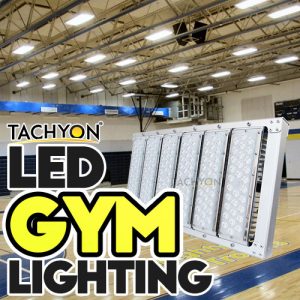
Philips HPI has a luminous efficiency of 106 lumen / watt and excellent luminous flux maintenance rate: with sodium lamp, the luminous flux maintenance rate can reach 70% after 12000 hours; with mercury lamp / metal halide lamp, the luminous flux maintenance rate can reach 75% after 12000 hours. The excellent luminous flux maintenance rate ensures the lighting effect during the whole operation period. The average life of HPI is up to 20000 hours, reducing the cost of replacement and maintenance.
In addition to excellent performance, Philips HPI metal halide lamps also have good system compatibility. They can work on the ballast system of mercury lamps or sodium lamps. It is easy and convenient to replace sodium lamps and mercury lamps, such as HPI-BUS type. The mercury lamp can be directly replaced with a trigger. Therefore, the factory can immediately complete energy-saving transformation and improve the lighting environment without any electrical modification and saving additional costs. In addition, Philips HPI metal halide lamp has a major feature, the starting voltage is only 750V, which improves safety.

